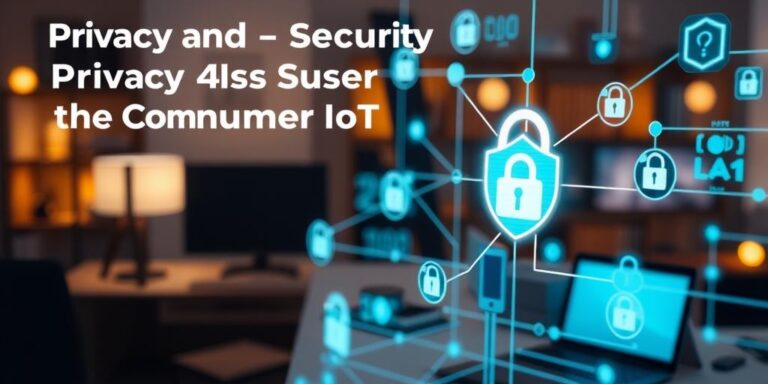Privacy and Security in the Consumer IoT Landscape (A 2025 Priority)
Introduction
The Internet of Things (IoT) has woven itself into the fabric of our daily lives, connecting everything from smart thermostats to wearable fitness trackers. By 2025, the consumer IoT landscape will be even more expansive and integrated. As the number of connected devices grows, so do the concerns surrounding privacy and security. This post examines the critical privacy and security challenges in the consumer IoT space and what stakeholders can do to address them.
The Expanding Consumer IoT Universe
The consumer IoT market includes a diverse range of devices, such as:
- Smart Home Devices: Lighting, security systems, and appliances.
- Wearable Technology: Smartwatches and fitness trackers.
- Entertainment Systems: Smart TVs and streaming devices.
- Connected Cars: Vehicles with built-in internet connectivity.
These devices collect and transmit vast amounts of personal data, raising significant questions about how this data is handled and secured.
Key Privacy Concerns
- Data Collection and Usage: IoT devices often collect more data than users realize. This data can be used for various purposes, including targeted advertising, profiling, and even predictive analytics. It’s crucial to understand what data is being collected, how it’s being used, and who has access to it.
- Lack of Transparency: Many IoT devices lack clear privacy policies or user-friendly interfaces for managing data preferences. This lack of transparency makes it difficult for consumers to make informed decisions about their privacy.
- Data Sharing with Third Parties: IoT device manufacturers may share user data with third-party partners, such as advertisers or data brokers. This data sharing can expose consumers to additional privacy risks, especially if these partners have lax security practices.
Security Challenges in the IoT Ecosystem
- Insecure Devices: Many IoT devices are designed with minimal security features, making them vulnerable to hacking and malware. Weak passwords, unencrypted data transmission, and lack of regular security updates are common issues.
- Network Vulnerabilities: IoT devices can serve as entry points for attackers to access home networks. Once inside, attackers can steal personal data, compromise other devices, or launch attacks on external targets.
- Lack of Updates and Patching: Many IoT device manufacturers fail to provide regular security updates, leaving devices vulnerable to known exploits. This problem is compounded by the fact that many consumers don’t know how to update their IoT devices.
Addressing Privacy and Security Concerns
- Regulatory Measures: Governments and regulatory bodies need to establish clear standards and guidelines for IoT privacy and security. These regulations should address issues such as data collection, data usage, data sharing, and security testing.
- Industry Best Practices: IoT device manufacturers should adopt industry best practices for security and privacy. This includes implementing strong security controls, providing transparent privacy policies, and offering regular security updates.
- Consumer Education: Consumers need to be educated about the privacy and security risks associated with IoT devices. This includes teaching them how to configure their devices securely, how to manage their privacy settings, and how to recognize and respond to security threats.
- Technological Solutions: Innovative technologies can help enhance IoT privacy and security. This includes encryption, authentication, access controls, and intrusion detection systems.
The Road Ahead
Privacy and security in the consumer IoT landscape will be a top priority in 2025 and beyond. Addressing these challenges requires a collaborative effort from governments, industry, and consumers. By working together, we can create a safer and more privacy-respecting IoT ecosystem.
Conclusion
The consumer IoT landscape offers convenience and innovation, but it also introduces significant privacy and security risks. By understanding these risks and taking proactive measures, we can harness the benefits of IoT while protecting our personal data and security. As we move closer to 2025, it’s imperative that all stakeholders prioritize privacy and security in the IoT ecosystem to build a trustworthy and sustainable digital future.




